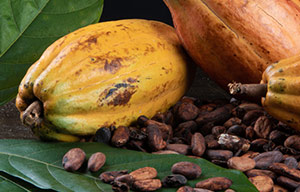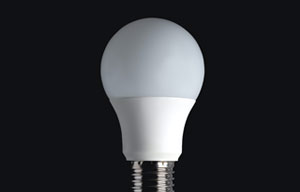1. Undang-undang.
Undang-undang Perlindungan Konsumen.
Act 599 Consumer Protection Act: Mengatur mengenai keamanan barang dan jasa, menjamin hak terhadap pemasok dan produsen sehubungan dengan barang, kewajiban produk, dan perlindungan terhadap pernyataan dan klaim palsu. Dalam undang-undang ini juga dijabarkan mengenai pendirian Dewan Penasihat Konsumen Nasional dan Pengadilan untuk Klaim Konsumen.
2. Kebijakan Pemerintah Malaysia.
Pembatasan Impor Tekstil & Produk Tekstil. Malaysia memiliki persyaratan lisensi impor non-otomatis untuk Kain Sarung batik dan semua bentuk rompi, termasuk rompi anti peluru atau pakaian khusus, atau bagian dari pakaian/busana yang memiliki penampilan atau warna yang digunakan pakaian seragam. Impor barang tersebut dilarang tanpa izin yang ditandatangani oleh pihak yang berwenang.
Khusus untuk kain dengan cetakan ayat Quran atau duplikat dari setiap ayat Quran benar-benar dilarang untuk beredar di pasar Malaysia.
3. Standar.
Beberapa standar tekstil dan produk tekstil yang yang harus diperhatikan ketika ekspor ke Malaysia.
Tekstil
- MS 1747-1:2018 (BM) (Second Revision) Tekstil – Tenunan Malaysia – Bahagian 1: Songket Malaysia (Semakan Kedua). Standard ini menetapkan spesifikasi bagi bahan-bahan mentah yang digunakan dalam proses tenunan, terma dan definisi yang berkaitan dengan songket serta proses tenunannya, struktur asas, kaedah penjagaan, kriteria kualiti dan penandaan atau pelabelan bagi Songket Malaysia.
- MS 1747-2:2014 Tekstil – Tenunan Malaysia – Bahagian 2: Tenun Ikat Iban. Standard ini menetapkan keperluan bagi bahan, proses, struktur, corak, kriteria kualiti, kaedah penjagaan, penandaan dan pelabelan serta kaedah pengujian bagi Tenun Ikat Iban.
- MS 1747-3:2018 (First Revision) Tekstil – Tenunan Malaysia – Bahagian 3: Tenun Pahang (Semakan Pertama). Standard ini menetapkan keperluan bagi bahan-bahan mentah yang digunakan dalam proses tenunan, terma dan definisi yang berkaitan dengan Tenun Pahang serta proses tenunannya, struktur asas, kaedah penjagaan, kriteria kualiti dan penandaan atau pelabelan bagi Tenun Pahang
- MS 1747-4:2020 Tekstil – Tenunan Malaysia – Bahagian 4: Tenun Dastar dan Tenun Rungus. Standard ini menetapkan spesifikasi bagi bahan mentah yang digunakan dalam
proses tenunan, terma dan definisi yang berkaitan hasil tenunan serta proses tenunan,
struktur asas, ka edah penjagaan, kriteria kualiti, penandaan dan pelabelan bagi Tenun Dastar
dan Tenun Rungus. - MS ISO 7211-2:2003 (CONFIRMED: 2015) textiles - Woven fabrics - Construction - Methods of analysis - Part 2: Determination of number of threads per unit length (ISO 7211-2:1984, IDT). This Malaysian Standard specifies three methods for the determination of the number of threads per centimetre in woven fabrics.
- MS ISO 5084:2003 (CONFIRMED: 2015) textiles - Determination of thickness of textiles and textile products (ISO 5084:1996, IDT). This Malaysian Standard specifies a method for the determination of the thickness of textiles and textile products when under a specified pressure. It is not applicable to textile floor coverings, nonwovens, geotextiles and coated fabrics for which specific International Standards exist.
- MS ISO 4916:2006 (CONFIRMED: 2015) textiles - Seam types - Classification and terminology (ISO 4916:1991, IDT). This Malaysian Standard classifies, illustrates and designates, the various kinds of stitched seams. lt is not intended to be fully comprehensive but to illustrate a number of the most used seam types . lt is applicable to seams used most particularly in the clothing industry. All illustrations show the cross-section of the material configuration only. This Malaysian Standard should be read in conjunction with ISO 4915.
- MS ISO 4915:2006 (CONFIRMED: 2015) textiles - stitch types - Classification and terminology (ISO 4915:1991, IDT). This Malaysian Standard classifies, designates, describes and illustrates the various kinds of stitch types used in hand-and machine-sewn seams.
- MS ISO 3801:2003 (CONFIRMED: 2015) textiles - Woven fabrics - Determination of mass per unit length and mass per unit area (ISO 3801:1977 and AMD. 1:1977, IDT). This Malaysian Standard specifies methods for the determination of (i) the mass per unit length, and (ii) the mass per unit area, of woven fabrics that have been conditioned in the S tandard atmosphere for testing. The standard are applicable to woven fabrics (including those of the “stretch” type) made up full width or folded down the middle, and apply to the determination of the fabric mass of complete pieces as well as of Sample lengths
- MS 2291:2010 (CONFIRMED: 2015) textile fabrics - Burning behaviour - Measurement of flame spread properties of vertically oriented specimens (ISO 6941:2003, MOD). This Malaysian Standard specifies a method for the measurement of flame spread times of vertically oriented textile fabrics and industrial products in t he form of single or multi-component fabrics (coated, quilted, multilayered, sandwich combinations, and similar combinations) when subjected to a small, defined flame.
- MS 2290:2010 (CONFIRMED: 2015) textile fabrics - Burning behaviour - Determination of ease of ignition of vertically oriented specimens (ISO 6940:2004, MOD). This Malaysian Standard specifies a method for the measurement of ease of ignition of vertically oriented textile fabrics and industrial products in the form of single or multi-component fabrics (coated, quilted, multilayered, sandwich constructions, and similar combinations), when subjected to a small, defined flame.
Pakaian/Garment.
- MS ISO 4418:2006 (CONFIRMED: 2015) Size designation of clothes - Gloves (ISO 4418:1978, IDT). This Malaysian Standard establishes a system of designating the sizes of gloves.
Both the control dimensions on which the size designation system is based, and the method of indicating the siz e designation on a garment label, are laid down - MS ISO 4416:2006 (CONFIRMED: 2015) Size designation of clothes - Women’s and girls’ underwear, nightwear, foundation garments and shirts (ISO 4416:1981, IDT). This Malaysian Standard establishes a system of designating the sizes of women's and girls' underwear garments, nightwear, foundation garments and shirts that are classified as a)covering the upper body only, or b)covering the whole body, or c) covering the lower body only, and applies to civilian and uniform garments.
- MS ISO 4415:2005 (CONFIRMED: 2015) Size designation of clothes - Men’s and boys’ underwear, nightwear and shirts (ISO 4415:1981, IDT). This Malaysian Standard establishes a System of designating the sizes of men's and boys' underwear, night wear and shirts that are classified as; a) covering the upper body only, or b) covering the wh ole body, orc) covering the lower body only, and applies to civilian and uniform garments.
Both the control dimensions on which the size designation System is based, ar ld the method of indicating the size designation on a garment label, are laid down - MS ISO 3638:2005 (CONFIRMED: 2015) Size designation of clothes - Infants’ garments (ISO 3638:1977, IDT). This Malaysian Standard establishes a system of designating the sizes of infants’ garments. Both the control dimension on which the size designation system is based, and the method of indicating the size designation on a garment label, are laid down.
- MS ISO 3637:2005 (CONFIRMED: 2015) Size designation of clothes - Women’s and girls’ outerwear garments (ISO 3637:1977, IDT). This Malaysian Standard establishes a System of designating the sizes of women's and girls' outwear garments (including knitwear and swimwear) that are classified as a) covering the upper or t he whole body, or b) covering the lower body only, and applies to civilian and uniform garments. Both the control dimensions on which the size designation system is based and the method of indicating the size designation on a garment label are laid down.
- MS ISO 3636:2005 (CONFIRMED: 2015) Size designation of clothes - Men’s and boys’ outerwear garments (ISO 3636:1977, IDT). This Malaysian Standard establishes a System of designating the sizes of men' and boy's outerwear garments (including knitwear and swimwear) that are classified as; a) covering the upper or the whole body, or b) covering the Iower body only, and applies to civilian and uniform garments. Both the control dimensions on which the size designation System is based and the method of indicating the size designation on a garment label are laid down.
- MS ISO 3635:2005 (CONFIRMED: 2015) Size designation of clothes - Definitions and body measurement procedure (ISO 3635:1981, IDT). This Malaysian Standard defines body dimensions and specifies a standard procedure for measuring the body.
Batik Malaysia.
- MS 692:2019 (BM) Batik Malaysia - Spesifikasi (Semakan kedua). Malaysian Standard ini menetapkan keperluan bahan, teknik, proses, keperluan, kaedah ujian, nilai estetika, penandaan dan pelabelan bagi batik Malaysia.
Lihat selengkapnya disini
4. Lembaga Berwenang.
Department of Standards Malaysia (DSM), Ministry of Investment, Trade and Industry (MITI) Departemen ini bertanggung jawab atas semua kebijakan terkait dengan standardisasi dan tanggung jawab operasional sementara hal teknis diserahkan ke SIRIM Berhad, satu-satunya badan pengembangan standar nasional. SIRIM QAS International, anak perusahaan SIRIM Berhad, adalah lembaga sertifikasi, inspeksi dan pengujian terkemuka di Malaysia, dan memberikan tanda untuk berbagai sertifikasi.
Website: https://www.jsm.gov.my/home
SIRIM QAS
Sebagai lembaga sertifikasi, inspeksi, dan pengujian terkemuka di Malaysia, anak perusahaan SIRIM Bhd. SIRIM Berhad, yang sebelumnya dikenal sebagai Standards and Industrial Research Institute of Malaysia. Sirim QAS adalah perusahaan milik pemerintah yang menyediakan infrastruktur kelembagaan dan teknis untuk pemerintah. Ini juga memberikan tanda untuk berbagai sertifikasi.
5. Informasi Lainnya.
Tekstil Industri Malaysia.
Sebagai pengetahuan, Malaysia memiliki regulasi terkait dengan proses industri dan lingkungan untuk industri tekstil, diantaranya
- Environmental Quality (Sewage and Industrial Effluents) Regulations, 1979 – for control of effluent discharge
- Environmental Quality (Clean air) Regulation, 1978 – for control of air emiisions
- Environmental Quality (Scheduled Wastes) Regulations, 1989 – for control of the ultimate disposal of toxic and hazardous wastes.
Informasi terkait regulasi diatas dapat dilihat pada Guideline Textile and Apparel Industry
Pelabelan umum.
Lainnya.



